
I’m a huge fan of duck breast. It’s basically the steak of the air. Yet as ubiquitous as ducks are, processed duck is incredibly rare. I only see duck at higher end restaurants where one breast goes for about $25–$35. Cooking breasts at home isn’t much better. I’ve found one butcher shop that sells two frozen duck breasts for $35. That’s $17.50 per breast, which is better than $26 but still a little ridiculous for what it is. I can buy a whole frozen duck at the grocery store for around $20, so I just got one and butchered it myself. I didn’t take pictures of the butchering (you’re welcome!), but I’ll describe what I got out of it.
After 20 minutes of work, I had two duck breasts, close to a pound of assorted duck meat for burgers or stir-fries, and a whole lot of fat. I mean, a lot of fat. Since duck fat is valued for its taste and cooking quality, I rendered it for later use. It’ll keep for months in the fridge.
All you have to do to render the fat is chop it into 1″ cubes and cook it over low heat in a heavy pot. Then strain it through cheesecloth and allow it to firm back up. Here’s a shot of the fat being strained.

Here’s the fat after it’s had a chance to cool. It’s soft at room temperature and smells great.
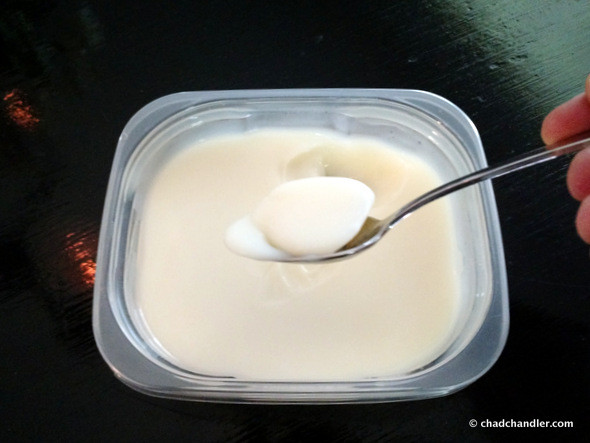
Here are my duck breasts, trimmed and scored on the fat cap.

These things are stupid easy to cook. You just start them fat-side-down in a cold pan and then turn the heat to medium. The fat renders and helps to fry the breasts. Then you flip them for a few minutes until the internal temperature hits 135° (for medium).
Just to reiterate, these started in a cold, dry pan. All of the oil you see here is fat that rendered out of these two breasts.
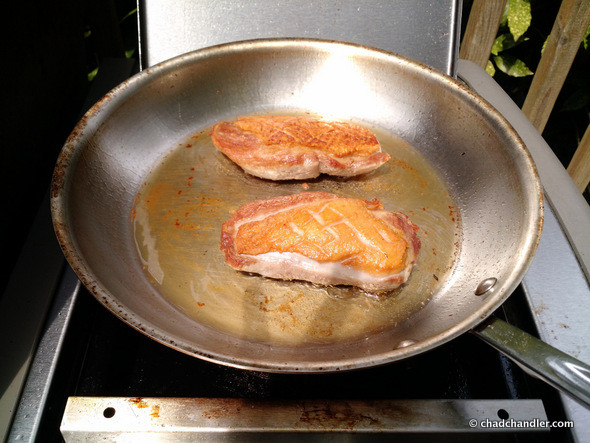
If you want them more rare, or if you want a larger area of rareness, then I’d recommend tossing them into the oven or grill over indirect heat just after flipping them. This is what a breast looks like when it’s done. It’s hard to tell from this angle, but it really plumped up during the cooking process.
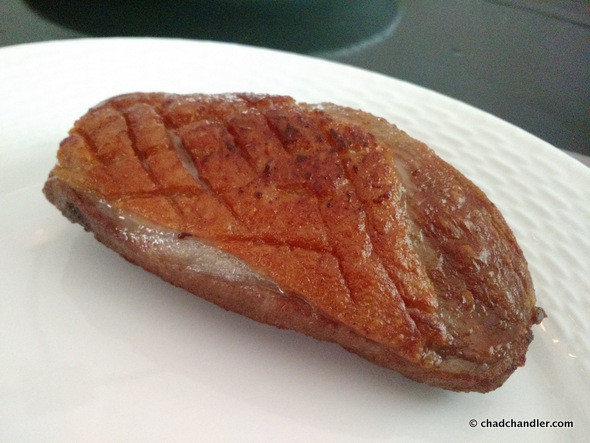
While the duck was cooking, I tossed a cast iron pan on my grill and melted some of the duck fat. Then I fried some parboiled gold potatoes with thyme and chives.

These tasted great, but the crust was pretty weak. Next time, I’ll parboil them and then leave them to dry on a wire rack in the fridge overnight. That way the moisture will evaporate and I’ll get a better sear. If that doesn’t work, a little corn starch should help.
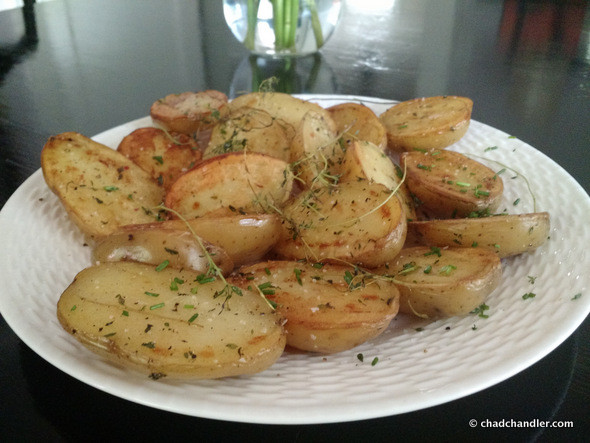
Once the breasts were cooked, I rested them on a plate and poured off most of the fat. Then I deglazed the pan with the following recipe:
Honey-Balsamic Glaze
- 1/4 cup chicken or veal demi-glacé
- 3 tablespoons honey
- 3 tablespoons balsamic vinegar
- 1 teaspoon fresh thyme
- Reserved duck fat (whatever coats the pan)
- Salt and pepper to taste
- Incorporate 2 tablespoons of cold, unsalted butter off the heat just before serving
I reduced the glaze by about half and then added the liquid from the rested duck breasts. Finally, I poured the glaze over the sliced duck. Most restaurants make cloyingly sweet, fruity sauces for duck. Since I don’t like sweets, this was the perfect complement for me. It was just sweet enough for the wife while being savory enough for me to enjoy.
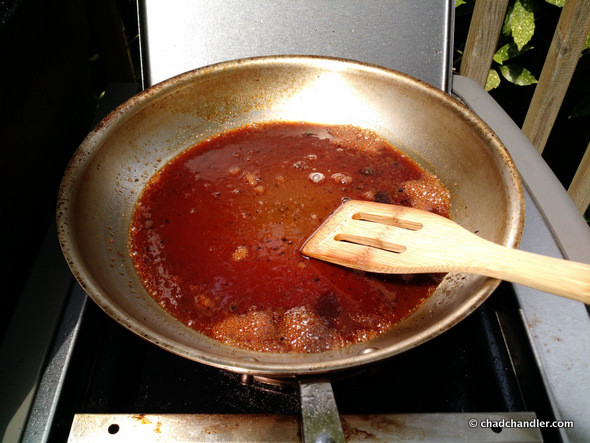
This is a keeper. I mean, this was really good. Sadly, this means that I’ll have a hard time justifying paying a professional chef $30+ to cook me one duck breast ever again.

Next time, I might render the fat and use it to confit the duck legs like people used to do before refrigeration.
Update
People keep asking me about the pans in my photos. The pan I used for the duck is a 10-inch saute pan from All-Clad. It’s more expensive than competitive brands like Tramontina, but they come with a lifetime warranty. I’ve returned my 12-inch pan to Williams Sonoma twice because of warping. They take it and hand me a replacement no questions asked. The warping wouldn’t be an issue if I had a gas range, but it’s a big deal on a glass cooking surface when the pan starts to spin on its own.
The cast iron is a 12-inch griddle from All-Clad. I actually won this pan in a cooking blog giveaway. I’m not sure I would have bought it on my own because the sides are so low, but it’s been a real workhorse as a grill accessory.










That was super good! Thanks for the recipe :)